IBWC VIII
Reportar esta entrada
Más sobre la misma comunidad-colección
Citywide Beauticians Club "Debutantes of 1969" Program
The front cover of the Citywide Beauticians Club's "Debutantes ...
Citywide Beauticians Club "Debutantes of 1969" Program
Page 1 of the Citywide Beauticians Club's "Debutantes of 1969" ...
Citywide Beauticians Club "Debutantes of 1969" Program
Pages 2 and 3 of the Citywide Beauticians Club's "Debutantes of ...
Citywide Beauticians Club "Debutantes of 1969" Program
Pages 4 and 5 of the Citywide Beauticians Club's "Debutantes of ...
Citywide Beauticians Club "Debutantes of 1969" Program
Pages 6 and 7 of the Citywide Beauticians Club's "Debutantes of ...
Citywide Beauticians Club "Debutantes of 1969" Program
Pages 8 and 9 of the Citywide Beauticians Club's "Debutantes of ...
Citywide Beauticians Club "Debutantes of 1969" Program
Pages 10 and 11 of the Citywide Beauticians Club's "Debutantes ...
Citywide Beauticians Club "Debutantes of 1969" Program
Pages 12 and 13 of the Citywide Beauticians Club's "Debutantes ...
Citywide Beauticians Club "Debutantes of 1969" Program
Pages 14 and 15 of the Citywide Beauticians Club's "Debutantes ...
Citywide Beauticians Club "Debutantes of 1969" Program
Pages 16 and 17 of the Citywide Beauticians Club's "Debutantes ...
Citywide Beauticians Club "Debutantes of 1969" Program
Pages 18 and 19 of the Citywide Beauticians Club's "Debutantes ...
Citywide Beauticians Club "Debutantes of 1969" Program
Pages 20 and 21 of the Citywide Beauticians Club's "Debutantes ...
Citywide Beauticians Club "Debutantes of 1969" Program
Pages 22 and 23 of the Citywide Beauticians Club's "Debutantes ...
Citywide Beauticians Club "Debutantes of 1969" Program
Pages 24 and 25 of the Citywide Beauticians Club's "Debutantes ...
Citywide Beauticians Club "Debutantes of 1969" Program
Pages 26 and 27 of the Citywide Beauticians Club's "Debutantes ...
Citywide Beauticians Club "Debutantes of 1969" Program
Pages 28 and 29 of the Citywide Beauticians Club's "Debutantes ...
Citywide Beauticians Club "Debutantes of 1969" Program
Pages 30 and 31 of the Citywide Beauticians Club's "Debutantes ...
Citywide Beauticians Club "Debutantes of 1969" Program
Pages 32 and 33 of the Citywide Beauticians Club's "Debutantes ...
Citywide Beauticians Club "Debutantes of 1969" Program
Pages 34 and 35 of the Citywide Beauticians Club's "Debutantes ...
Citywide Beauticians Club "Debutantes of 1969" Program
Page 36 of the Citywide Beauticians Club's "Debutantes of 1969" ...
Roxxy Music Presents Various Metal Bands, 1990s
90s band poster advertising a metal band show at The Pit on 217 ...

















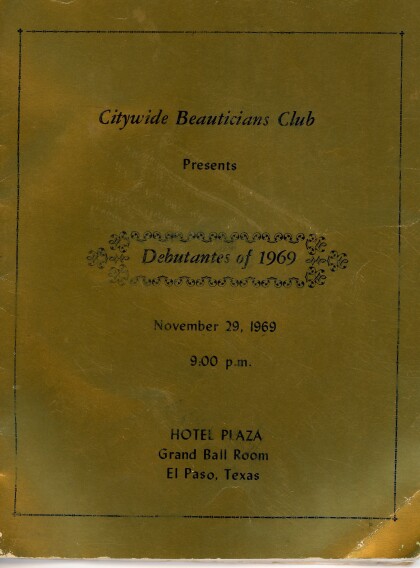
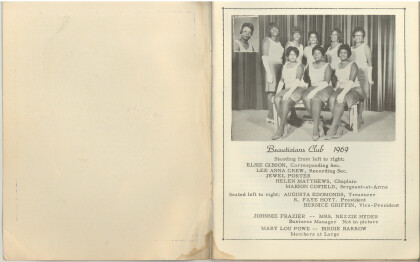
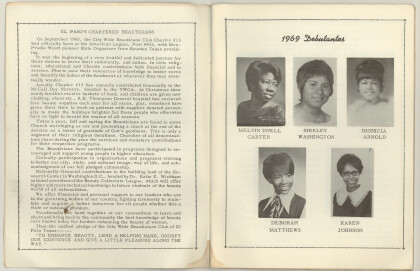
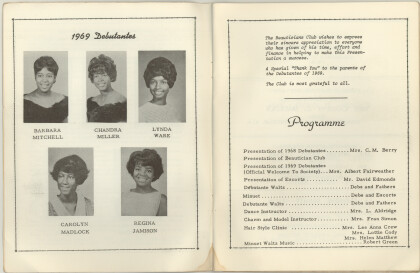
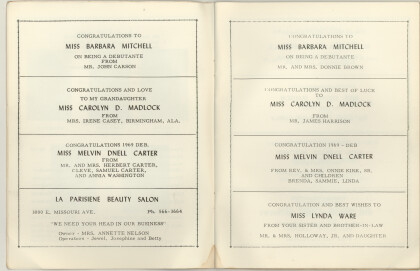
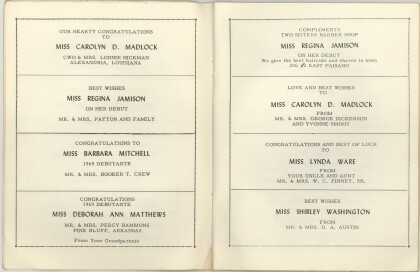
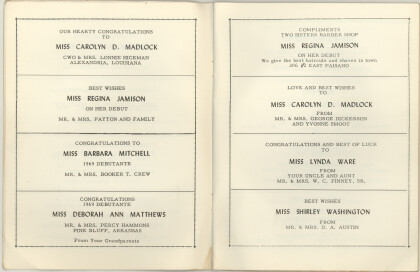
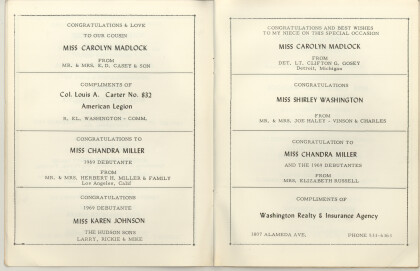
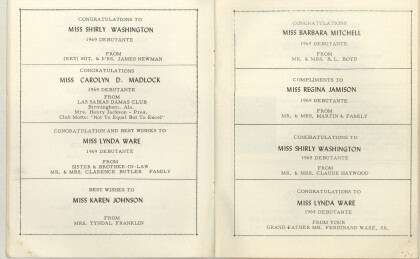
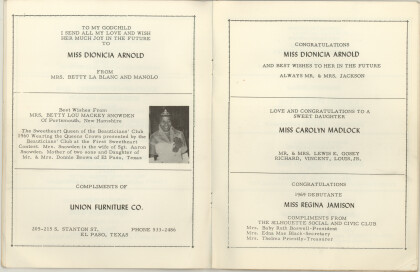
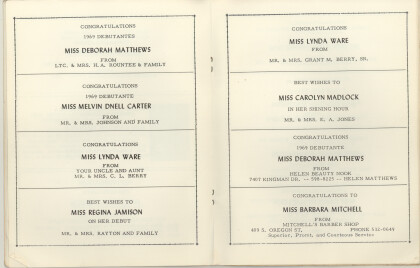
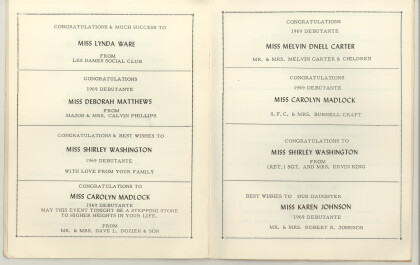
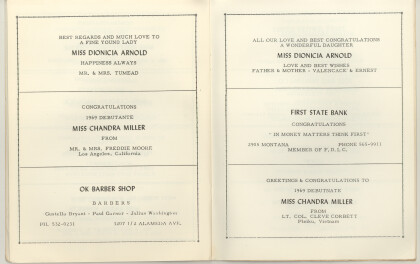
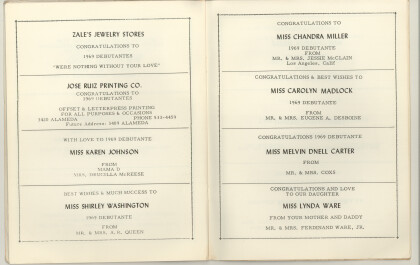
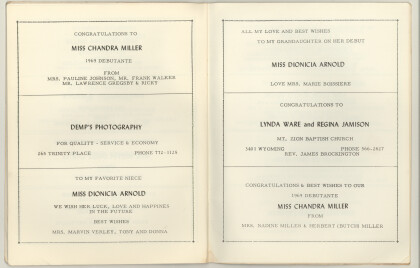
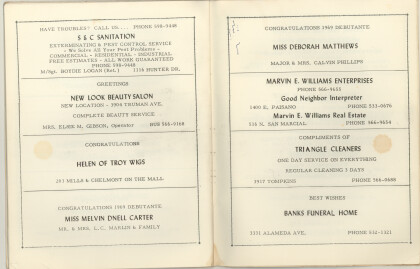
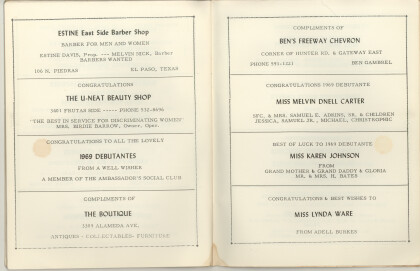
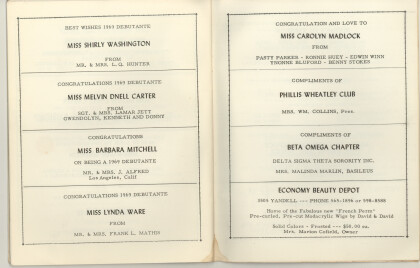
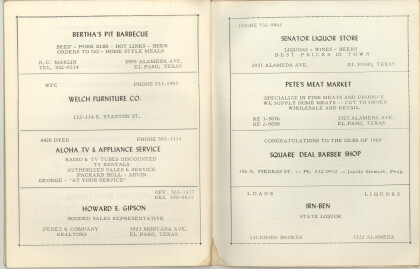
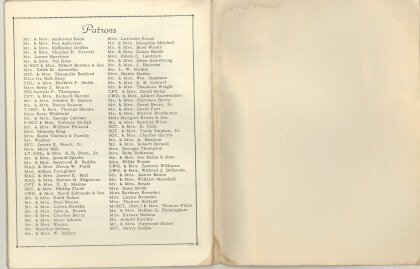
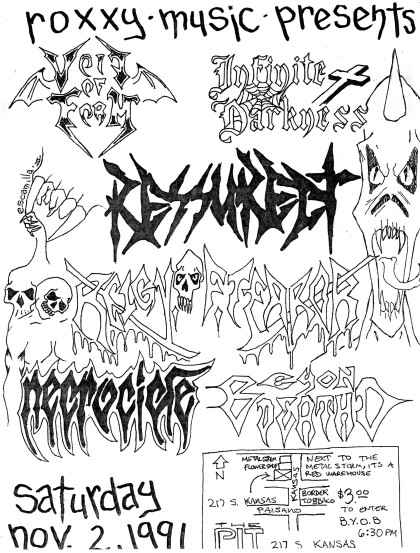
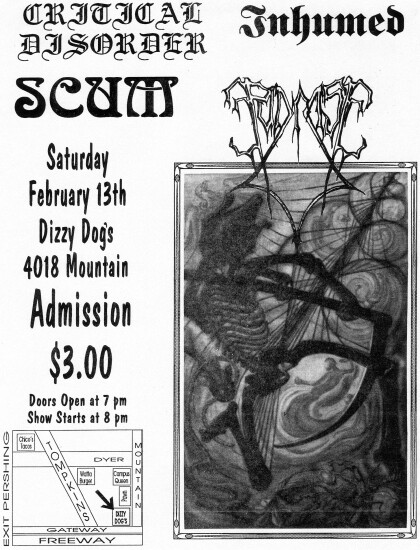
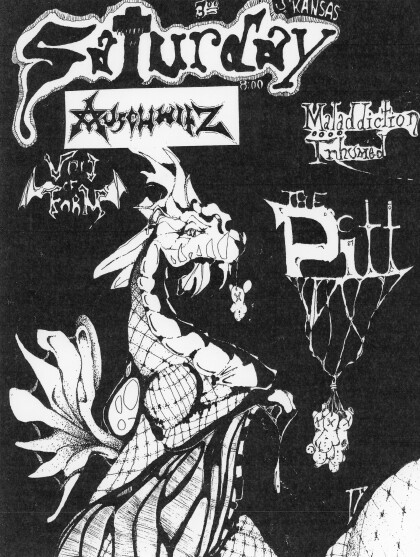
Comentarios
Hacer un comentario